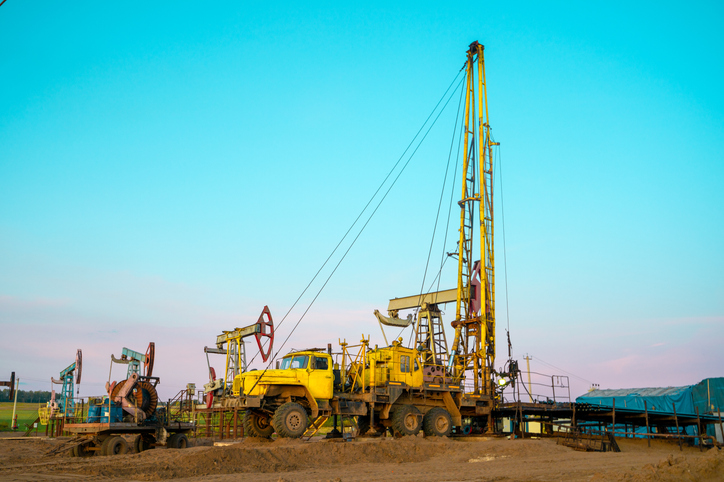
Undefeated Oil Field Accident Lawyers
While periodic workovers are critical for ensuring the integrity of an oil or natural gas well throughout its lifetime, they can be extremely dangerous.
The complexity of a typical workover operation, the simultaneous presence of multiple service providers on-site, and a very real possibility that an oilfield company will cut corners in the rush to get a well producing again often create dangerous conditions that significantly increase the likelihood of a catastrophic workover rig accident or explosion.
Understanding Workover Rig Activities
Workover activities are usually performed when a well’s production has declined or after mechanical problems have arisen that require remediation. Examples of these operations include:
- Casing Repairs: The potential for a well blowout increases significantly should leaks develop in a well’s casing.
- Wellbore Cleaning: Wellbores often become clogged with scale deposits, paraffin buildup, and sand accumulation.
- Pump Changeouts: This procedure replaces a worn or malfunctioning downhole pump.
- Tubing Changeouts: Over time, the tubing that carries fluids up the well can corrode, reducing the flow of oil and creating safety hazards.
- Artificial Lift Installations: When natural pressure is inadequate to bring oil and gas to the surface, a workover crew may be called upon to install artificial lift systems to aid in the extraction of oil and gas from a deep reservoir.
- Well Abandonment: When a well is no longer productive, a workover crew must ensure it’s safely shut in. This involves isolating the well from the reservoir, plugging it with cement, and removing all surface equipment from the site.
These and other workover procedures are performed utilizing a workover rig. While very similar to a standard drilling rig, workover rigs are temporary structures designed to be removed from the job site once workover activities have been completed.
Ensuring Safety on a Workerover Rig
Because the highly complex and dynamic environment characteristic of a workover rig only adds to the risks inherent in any oilfield setting, workover service providers must take precise steps to ensure safe and efficient operations.
- Plan each phase of the operation meticulously.
- Prioritize safety through training and risk assessment.
- Inspect and prepare equipment thoroughly.
- Evaluate the well’s condition before starting work.
Oilfield companies must also follow specific regulations established by the U.S. Occupational Safety & Health Administration (OSHA), both in the course of normal drilling operations and during wall workover activities. Examples of these regulations include requirements to:
- Supply workers with personal protective equipment that fits properly and offers protection to appropriate standards at no cost to workers.
- Alert all personnel to potentially hazardous areas using color codes, labels, posters, and signage.
- Provide oil and gas training to workers in a language they understand.
- Install shutdown systems, intake flame arrestors, and exhaust spark arrests on equipment and machinery.
- Conduct Risk Analysis (RA), Hazard Analysis (HA), or Job Safety Analysis (JSA) to determine where the hazards exist before performing welding or other hot work.
- Train workers to recognize and understand the job and the hazards of hot work and follow safe work practices to prevent fires and explosions.
- Maintain well control at all times. To prevent a well blowout, operators should install blowout preventers and associated valves at the top of the well-casing head before drilling and after rigging.
- Properly label and store all hazardous materials.
To control kicks and prevent blowouts during workover activities, oilfield service providers are also expected to follow American Petroleum Institute (API) standards governing the selection and utilization of well control equipment, including mechanical and hydrostatic barriers and blowout preventers, drilling mud, mud monitoring equipment, degassers, and mud mixing systems.
Workover Rig Accidents Are Preventable
In our experience, workover rig accidents are always preventable.
Unfortunately, because time is money on the oilfield, far too many oil and gas companies are willing to cut corners and rush workover activities to bring their wells back online as quickly as possible, even if that means ignoring critical safety regulations.
That’s precisely what happened when a blowout erupted during workover activities at a Burleson County, Texas, oilfield, tragically killing three workers and sending another to the hospital with third-degree burns over 60 percent of his body.
Our Undefeated oilfield accident lawyers discovered that the operator violated company safety policies and API requirements by failing to utilize a mechanical and hydrostatic barrier to properly kill the well before those operations began.
We subsequently recovered the #1 Largest Oilfield Injury Settlement in U.S. History on behalf of the surviving worker and his family.
Injured in a Workover Rig Accident? Contact Our Undefeated Oilfield Accident Lawyers at 1-888-603-3636 for a Free Consult
Our Undefeated Oilfield Accident Lawyers have won billions for oil and gas workers who were severely injured, catastrophically burned, and tragically killed in Texas, Louisiana, and across the United States.
If you or a loved one were hurt in a workover rig accident or explosion, call 1-888-603-3636 or Click Here to submit a confidential email through our “Contact Us” form.
We’ll answer your questions, explain your rights, and ensure you have the information you need to make the best decision for yourself and your family.
The consultation is free, and you’ll owe absolutely nothing unless we win your case.